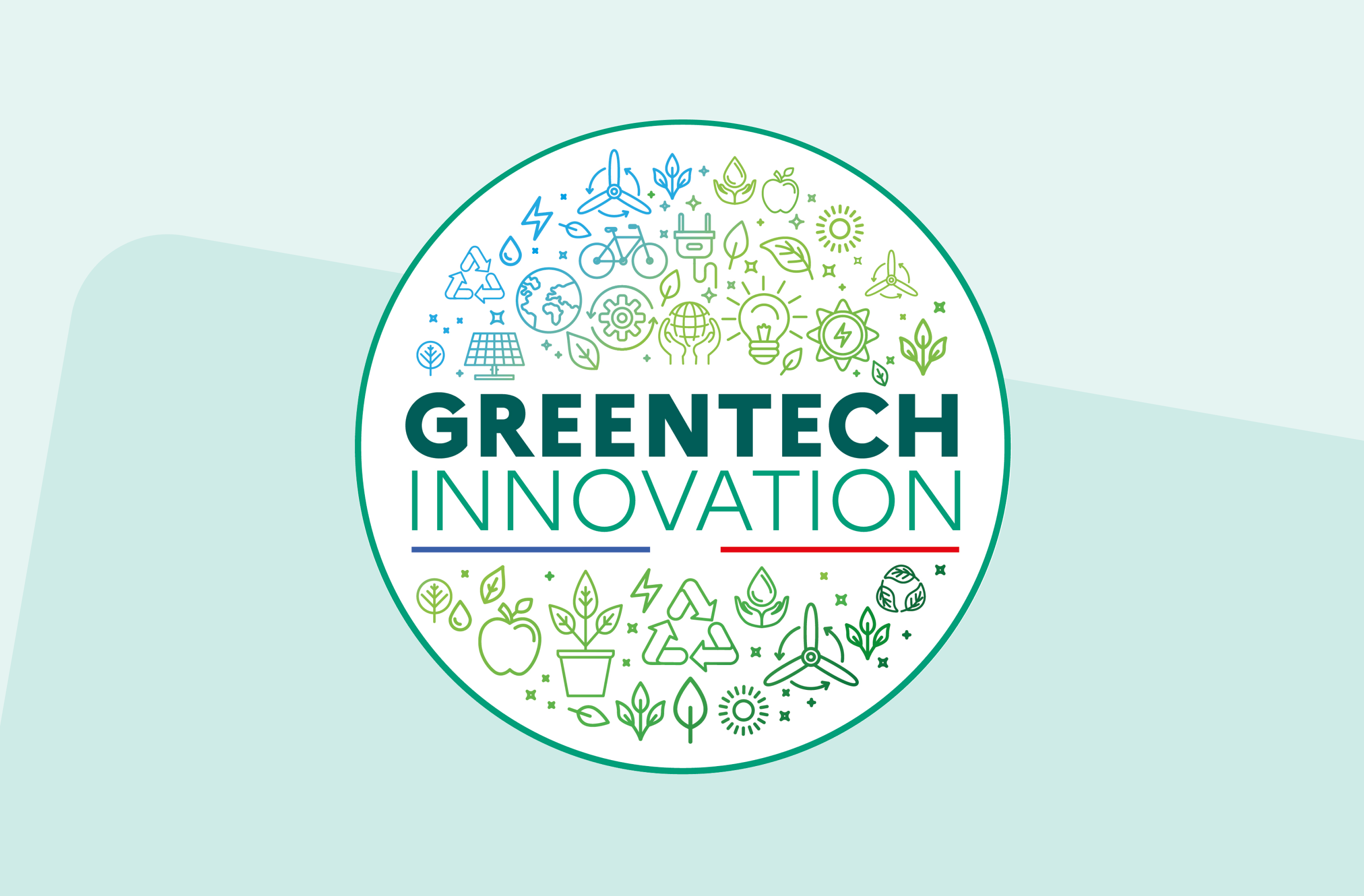Retour sur le webinaire rzilient x Keewe
.png)
Découvrez notre solution tout-en-un
Les appareils et objets numériques ont une place de plus en plus importante dans notre quotidien. Leur consommation augmente chaque année, et la production de déchets d’équipements électrique et électronique aussi (60 millions de tonnes de DEEE produites annuellement).
Il n’est donc pas surprenant que le numérique soit devenu un enjeu environnemental majeur, et que la question de son impact et de l’avenir du secteur se pose.
Le 20 janvier, à l’occasion du webinaire “Et si la gestion de nos équipements numériques était plus éco-responsable ?”, notre responsable RSE, Audren Letellier, et Alexandre Torbay, co-fondateur de Keewe - une plateforme de services financiers qui facilite la transition écologique de ses utilisateur.rices - se sont posé la question de la place du numérique dans les sujets environnementaux. Après avoir planté le décor de l’urgence climatique actuelle (marquée par un dérèglement climatique croissant), ils ont partagé les chiffres clés de l’impact du numérique, et abordé plus en détails la question des terminaux, et de ce qui peut être fait pour réduire leur impact.
Le contexte d’urgence climatique
Le 9 août 2021, le Groupe d’experts intergouvernemental sur l’évolution du climat (GIEC) des Nations unies a publié l’AR6 Climate Change 2021, le premier volet de son sixième rapport sur l’évaluation du climat. Ses conclusions sont sans ambiguïtés : le dérèglement climatique est la conséquence des activités humaines, qui ont réchauffé l’atmosphère, la cryosphère, les océans et les terre, et provoqué des émissions de gaz à effet de serre (GES).
Cette hausse se produit depuis 150 ans : +1.1°C, c’est la hausse de la température moyenne à la surface du globe entre 1850 et 2020, et +0.8/0.9 pour les océans.
Les conséquences de ce dérèglement se font déjà ressentir, avec une hausse de la fréquence et de l’intensité des événements climatiques extrêmes qui menacent modes de vie et territoires :
- Vagues de chaleur
- Fortes précipitations
- Sécheresses
- Conditions propices aux incendies
- Elévation du niveau moyen des mers (+9 cm entre 1993 et 2019)
- Acidification des océans
Quelques semaines après la parution de ce rapport, la COP26 s’est ouverte à Glasgow et a vu se réitérer les engagements internationaux déjà pris lors de la COP21 : rester sous les +1.5°C/2.0°C, et atteindre la neutralité carbone à horizon 2050.
Impact du numérique : les ordres de grandeurs
Le poids du numérique dans les émissions de GES
Alors, qu’est-ce que le numérique vient faire la dedans ? Est-ce que son impact environnemental est significatif ?
C’est le moins que l'on puisse dire : le secteur représente entre 3,5 et 4% des émissions mondiales de gaz à effet de serre (GES), connaît pour l’instant une croissance autour de 6% par an (un chiffre qui risque de croître encore avec le développement du secteur, et paraît peu compatible avec une trajectoire 2°C...), et exerce aussi des pressions croissantes sur des ressources naturelles (avec l'extraction des matériaux destinés à la fabrication des équipements).
Les causes de cette croissance exponentielle
Plusieurs raisons à la hausse de cet impact pas si dématérialisé :
- L’envolée (+26%/an) de la quantité de données échangées (data), par exemple, le visionnage des vidéos en ligne (près de 60 % des usages du numérique) a généré en 2018 plus de 300 millions de tonnes de C02 - soit autant de gaz à effet de serre que l’Espagne, ou près de 1% des émissions mondiales.
- La hausse du nombre de terminaux connectés : Internet of things (Iot) correspond à tout objet ou « chose » connectée à un réseau Internet et qui peuvent communiquer ensemble en s’échangeant des données. Ce marché a connu une forte croissance en France et dans le monde, en partie grâce à la pandémie de coronavirus (restrictions de déplacement, obligation de travailler à distance...).
- La hausse du nombre de personnes équipées de terminaux connectés : le nombre de personnes utilisant un smartphone représentait 6,4 milliards ou 79 % de toutes les connexions mobiles dans le monde en juillet 2021. Cela représente en un an une hausse de 68% du trafic de données mobiles mensuel moyen dans le monde.
- Le développement de nouveaux réseaux pour assurer ces nouveaux services, comme les réseaux fibres et réseaux mobiles 4G, 5G, qui permettent de transférer des données de plus en plus nombreuses de plus en plus rapidement, et se traduit donc par une hausse du nombre de données échangées, la boucle est bouclée.
L’augmentation de l’usage des appareils numérique induit une augmentation de leur consommation d’énergie, et donc de fait une augmentation des émissions de GES.
Le cas des terminaux
En ce qui concerne la répartition des émissions de GES du secteur, elle ne correspond pas forcément à l’idée reçue que l’on s’en fait : ce sont les terminaux qui pèsent le plus lourd dans la balance (64%), plus que le stockage des données, les data centers (20%), et les réseaux (16%).
Etat des lieux
Les impacts viennent principalement des équipements des utilisateurs, et la hausse de l’empreinte du numérique s’explique par un certain nombre de tendances à la hausse, dans le milieu professionnel notamment :
- Le nombre d’équipements neufs mis sur le marché : 371 millions d’équipements en 2019, une hausse de 50% par rapport à 2018,
- De facto, l’augmentation de la production résulte en une augmentation du nombre de D3E,
- Le taux d’équipement : 2,5 appareils par utilisateur en France, qui représentent 44 à 70% des impacts du numérique par utilisateur et s’expliquent par la généralisation de plus en plus fréquente du 2e écran.
Et parallèlement, le taux de renouvellement baisse : en 30 ans, la durée d’utilisation d’un appareil est passée de 11 à 4 ans. Ces courbes provoquent des tensions sans précédents sur les ressources non renouvelables, et menacent de créer des pénuries. Selon Frédérique Bordage, spécialiste français du numérique responsable : “Le numérique est une ressource épuisée dans 30 ans”.
Le reconditionné comme solution pour réduire son empreinte numérique
Fabriquer un nouvel appareil a plus d’impact que de l’utiliser. Pour les terminaux, la part liée à la fabrication représente 45% de l’impact d’un appareil (d’où l’importance de considérer l’allongement de sa durée de vie) et 19% sont liés à son utilisation.
Faire le choix du reconditionné (accompagné d’une politique IT durable !) comporte de nombreux avantages, environnementaux, sociaux et éthiques, économiques, et même sur le plan juridique : le cadre réglementaire est de plus en plus strict (loi AGEC février 2020, loi REEN novembre 2021) pour pousser les entreprises à adopter des modèles plus responsables.
Cas d’usage avec Sarah, Office Manager de GarantMe
GarantMe est une société Insuretech à la croissance exponentielle, qui propose une solution de garantie pour les locataires qui n’ont pas de garants. Rzilient a accompagné GarantMe dans une gestion de flotte plus simple et durable, pour alléger leur empreinte numérique.
On a toujours fonctionné avec du reconditionné. [...] Le problème, c’est qu’avec ce type de croissance, ça devient de plus en plus compliqué de gérer les besoins en termes de matériel quand on a 5 à 10 arrivées par mois, et de gérer les pannes, les casses, les verres d’eau sur le clavier... [...] On est entrés en contact avec Rzilient pour obtenir une meilleure gestion de notre flotte en termes d’acquisition et de gestion au quotidien. Ca s’est très bien passé [...] Rzilient a su s’adapter à notre croissance et à nos besoins grandissants ! On a une équipe dédiée hyper réactive et hyper pertinente, et on est particulièrement satisfaits de la proposition de Rzilient.
Sarah
Conclusion
Si l’on veut limiter les conséquences négatives sur nos modes de vie, il nous faut réduire nos émissions de GES, et viser la neutralité carbone d’ici à 2050 (ou même avant).
En ce qui concerne le numérique, un secteur en forte croissance (+6%) et qui pèse déjà 4% des émissions de GES, la tendance doit aller vers des usages raisonnés pour maîtriser son impact environnemental (eau, ressources abiotiques, consommation d’énergie, GES).
Les solutions consistent notamment à allonger la durée de vie des terminaux (réparation, reconditionnement), dont la production est la première sources d’émissions de GES pour le secteur numérique, ou à privilégier du matériel reconditionné, pour lui donner une seconde vie !
Vous désirez discuter de l’empreinte environnementale de votre entreprise, et adopter une politique iT plus responsable ? Discutons ensemble de votre projet.
Sources :
- Impact environnemental du numérique : tendances à 5 ans et gouvernance de la 5G, The Shift Project, 2021
- Climat : l’insoutenable usage de la vidéo en ligne, The Shift Project , 2019
- 6ème rapport d’évaluation du GIEC, rapport du Groupe 1 sur les bases scientifiques et physiques du changement climatique, GIEC, 2021
- Quelle est l’empreinte carbone du streaming ? EDF, 2021
- Les chiffres clés du climat 2022, Gouvernement français, 2021
- ARCEP, Rapport « Pour un numérique soutenable », 2020






